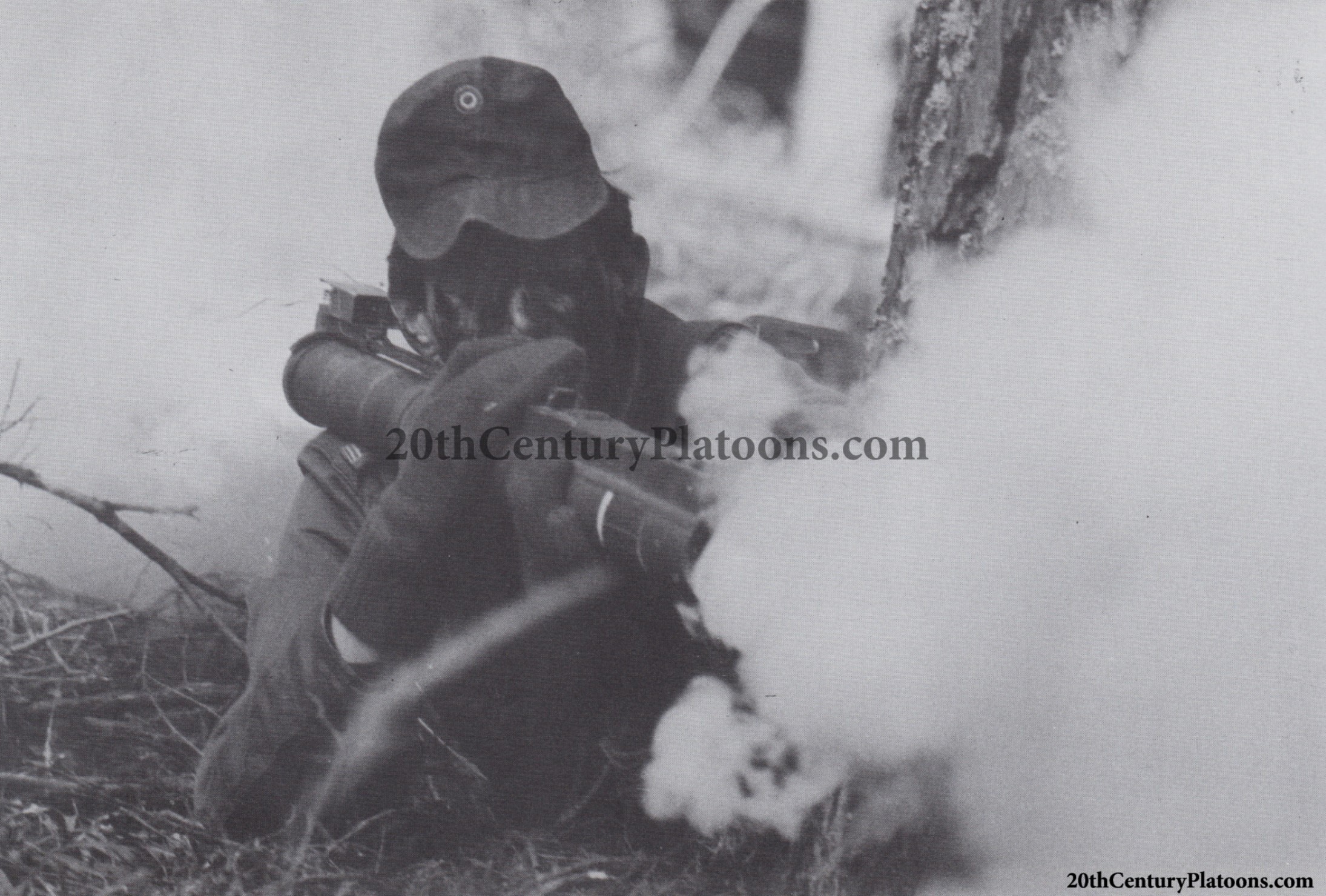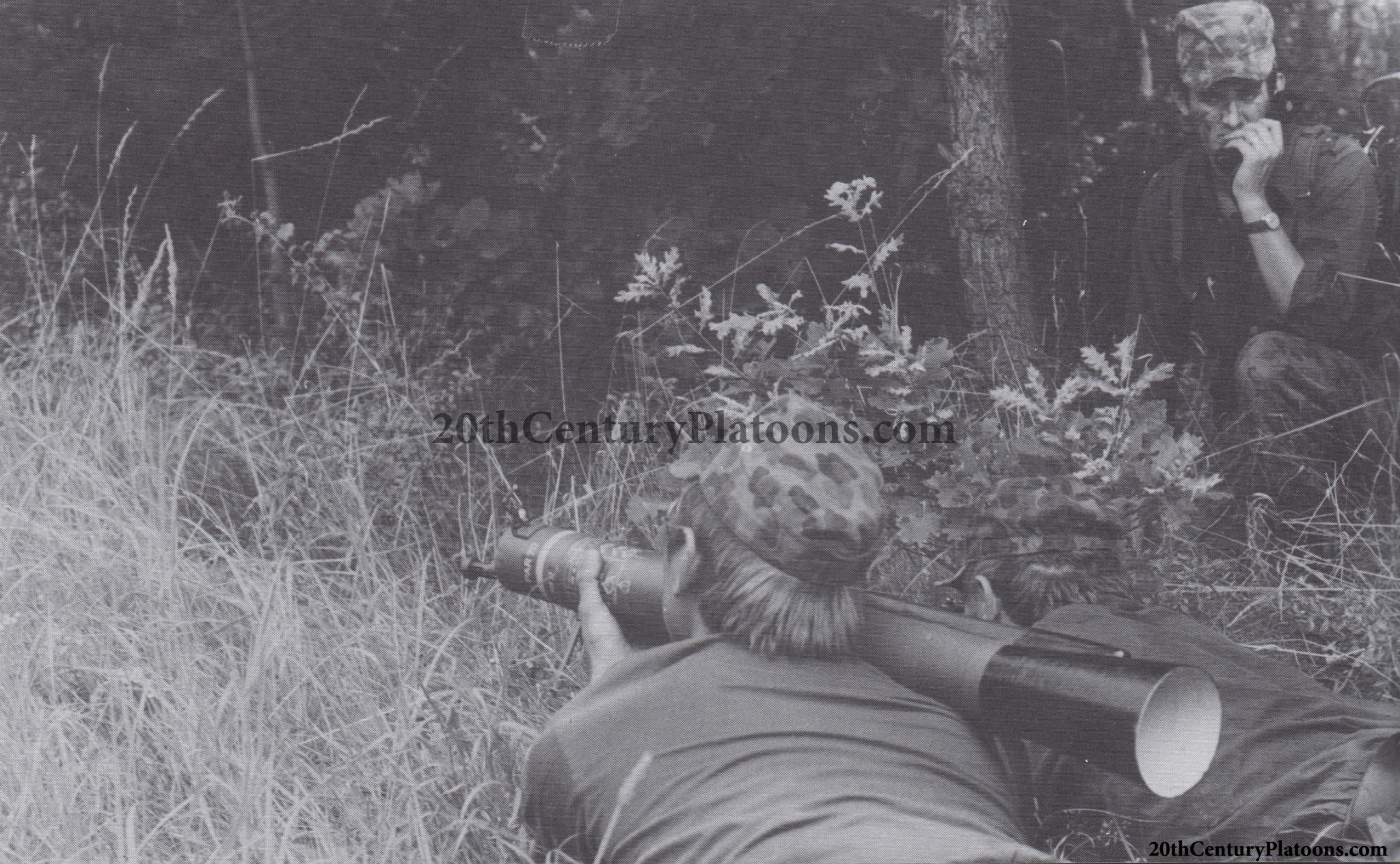The M72 LAW and Pansarskott 68 “Miniman”: an Austrian Perspective
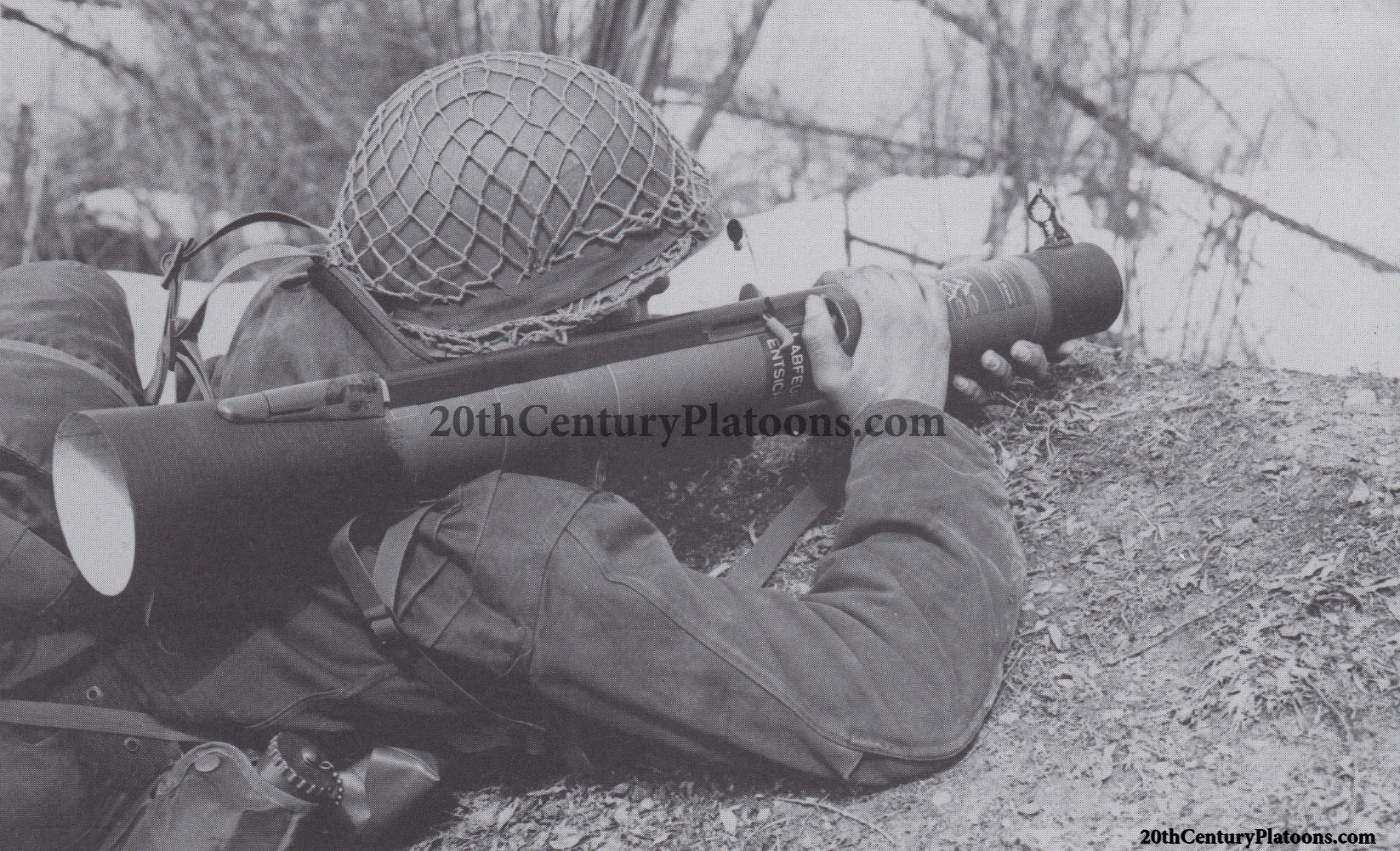
As a spiritual successor to the German Panzerfaust of WWII, the M72 LAW has been widely adopted – and copied – since the 1960s. Commonly replaced by heavier systems starting in the 1980s, the M72 has often been readopted, its light weight and small dimensions allowing it to fill a particular niche in any military’s arsenal.
In terms of export success, the weapon was unmatched, despite several competitors: the French SARPAC and WASP 58, and Swedish Pansarskott 68 “Miniman”. The latter had some foreign users, including the Austrian Army, which adopted it as a replacement for the M72 LAW after only three years of use.
This raises an interesting question:
Why did the Austrian Army adopt a similar weapon to replace the M72 LAW?
The M72 LAW – the PAR 67
Adopted circa 1967, the M72 LAW was known to the Austrians as the 6,6 cm Panzerabwehrrohr 67, abbreviated to PAR 67.From the manual, we have the following description:
Translated:Das 6,6 cm Panzerabwehrrohr 67 (PAR 67) ist eine rückstoßfreie Panzerabwehrwaffe. Die ausziehbare Abschußvorrichtung der Waffe dient gleichzeitig als wasserdichter Transportbehälter und wird im Einsatz nach dem Abschuß weggeworfen.
Die einfache Handhabung durch einen Mann (Einmannwaffe!), die Möglichkeit der Verwendung aus allen Anschlagarten von der Schulter und die große Wirkung machen sie zu einer sicheren Panzervernichtungswaffe.
The 6,6 cm Panzerabwehrrohr 67 (PAR 67) is a recoilless anti-tank weapon. The weapon’s extendable launch unit simultaneously serves as a watertight packing container and is thrown away after having been fired.
As a result of its ease of use by a single man (One-man weapon!), the ability of using all firing positions from the shoulder, and the great effect on target, the weapon is a capable anti-tank weapon.
Technical specifications were as follows:
| Metric | Imperial | |
| Calibre | 6.6 cm | 2.6 in |
| Total weight | 2.14 kg | 4.7 lbs |
| Length (closed position) | 64 cm | 25.2 in |
| Length (firing position) | 89 cm | 35 in |
| Weight of the rocket | 1.00 kg | 2.2 lbs |
| Muzzle velocity | 145 m/s | 476 ft/s |
| Maximum firing range | 1100 m | 1203 yds |
| Effective range | 200 m (approximately) | 219 yds (approximately) |
| Stationary tanks | 250 m | 273 yds |
| Moving tanks | 200 m | 219 yds |
| Arming distance | 8 m (minimal) | 9 yds (minimal) |
| Penetration | 260 mm | 10 in |
| Sighting system | 100 to 325m, 25m increments | 110 to 355 yds, 27yd increments |
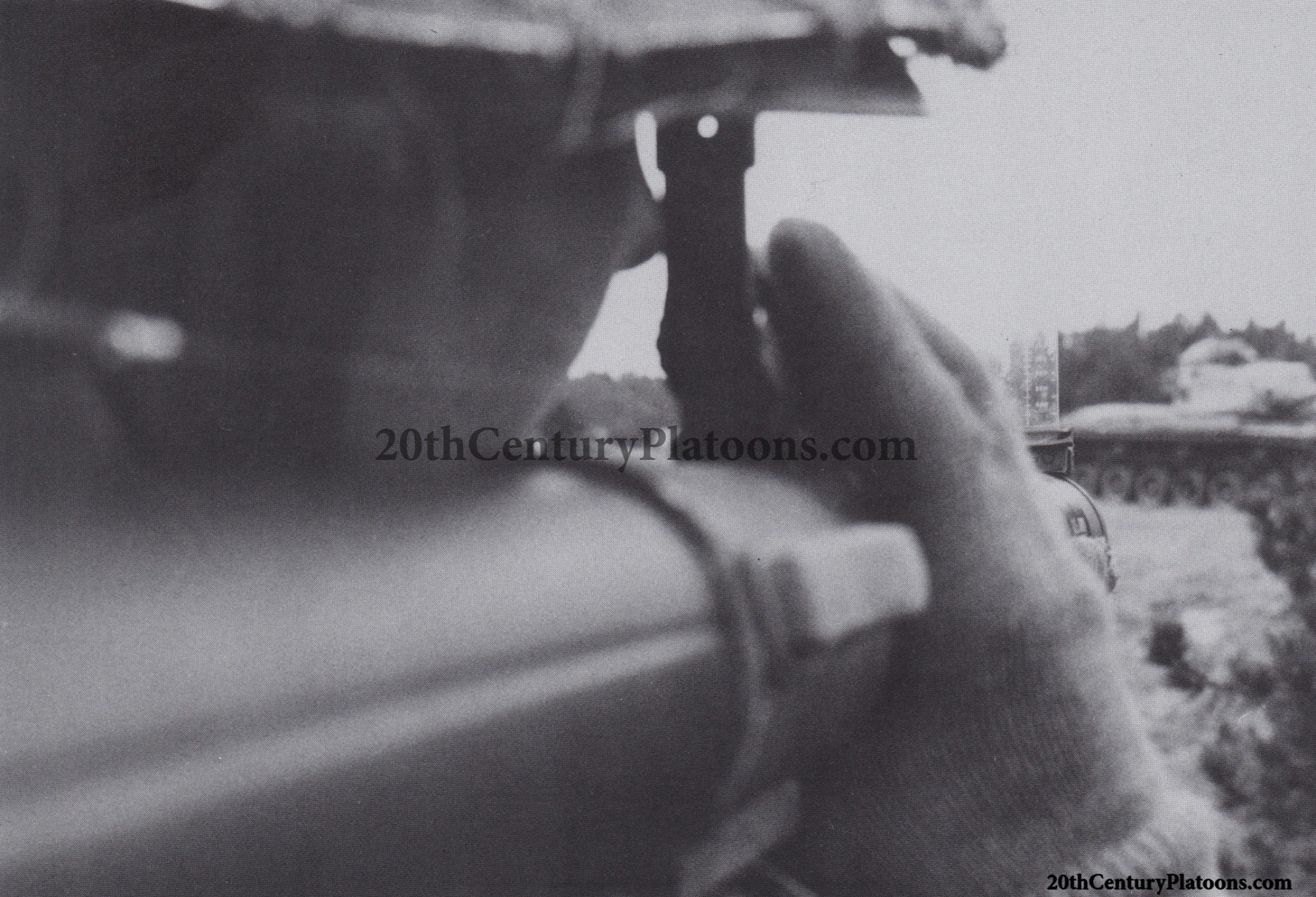
The Pansarskott 68 “Miniman” – the PAR 70
Adopted circa 1970 to replace the M72 LAW, the Swedish “Miniman” is described as such:Meaning:Das 7,4 cm Panzerabwehrohr (7,4 cm PAR 70) – in der Folge im Text PAR 70 genannt – ist eine rückstoßfreie Einmannwaffe, die vor allem zur Bekämpfung von Kampffahrzeugen auf Entfernungen bis 250 Meter vorgesehen ist.
Das PAR 70 ist eine Verbrauchswaffe, deren Abschußvorrichtung im Einsatz nach dem Abfeuern weggeworfen [...] wird.
The 7,4 cm Panzerabwehrrohr 70 (7,4 cm PAR 70) – from hereon PAR 70 – is a recoilless individual weapon, intended above all to engage armoured fighting vehicles at ranges up to 250 metres.
The PAR 70 is a disposable weapon, whose launch unit is thrown away after firing.
| Metric | Imperial | |
| Calibre | 7.4 cm | 2.9 in |
| Total weight | 2.9 kg | 6.4 lbs |
| Weight of the grenade | 0.9 kg (approximately) | 2 lbs |
| Length | 90 cm | 35.4 in |
| Muzzle velocity | 160 m/s | 525 ft/s |
| Maximum firing range | 1100 m | 1203 yds |
| Effective range | 200 m (approximately) | 219 yds |
| Stationary tanks | 250 m | 273 yds |
| Moving tanks | 150 m | 164 yds |
| Arming distance | 10 m | 11 yds |
| Penetration | 300 mm | 12 in |
| Sighting system | "50 to 250m, 50m increments" | "54 to 273 yds, 54yd increments" |
With regards to employment, the manual teaches us the following:
Translated:Um einen zweckmäßigen Einsatz der PAR-Schützen sicherzustellen und beim Verschuß des PAR 70 eine Gefährdung eigener Soldaten zu vermeiden, ist der Feuerkampf von einem Kommandanten – in der Regel vom Gruppenkommandanten – vorzubereiten und zu leiten.
[...]
Der Feuerkampf mit PAR 70 gegen Kampffahrzeuge verspricht am meisten Erfolg, wenn die PAR-Schützen:
- Aus Kampfdeckungen wirken
- Ihr PAR 70 rechtzeitig zum Schuß vorbereitet und griffbereit bei sich liegen haben
- Die Ziele herankommen lassen und das Feuer erst auf Einsatzschußweite eröffnen und
- Zu zweit dasselbe Ziel bekämpfen.
To ensure the safety of the soldiers (with regards to backblast) and to ensure an optimal deployment of the PAR 70, the squad leader will typically assign sectors and command soldiers when engaged.
[...]
Engaging in a firefight against tanks with the PAR 70 will yield the best results, when PAR-gunners:
- Engage from cover
- Ready their PAR 70 in advance and have it within reach
- Let their targets approach and open fire at the effective ranges and
- Engage targets in pairs
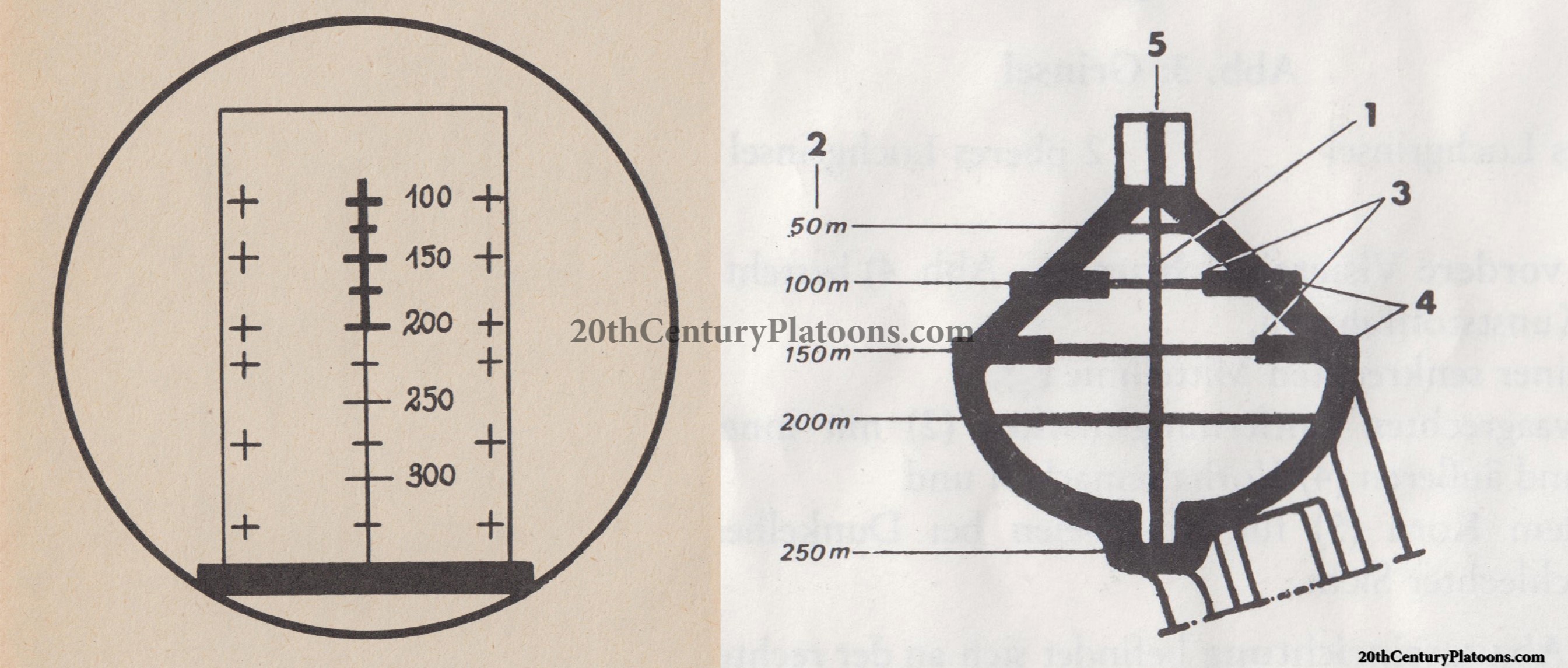 The M72 LAW and Pansarskott 68 sights respectively
The M72 LAW and Pansarskott 68 sights respectively
A possible reason for replacement?
As shown above, a great deal of value is placed on the ability to have the weapon ready-to-fire at a moment’s notice.In case of the M72 LAW, extending the launch unit so as to deploy the weapon for firing breaks the watertight seal, whereas this is not the case with the “Miniman”.
Translated:Das PAR 67 ist nun transportsicher, aber nicht mehr wasserdicht (wenn die Rohre auseinandergezogen werden, bricht die Dichtung, die beide Rohre wasserdicht abschließt). Im Winter kann es daher vorkommen, daß die Rakete im Rohr festfriert und es dadurch beim Abfeuern zu einem Unfall kommt.
The PAR 67 is now safe to transport, though no longer watertight (when the tubes are pulled apart, the watertight seal which protects both tubes is broken). As a result, it is possible for the rocket to freeze inside the tube, resulting in an accident when firing.
The PAR 70 does not suffer from the same issue, as the weapon is prepared for firing and made safe in an entirely different manner.
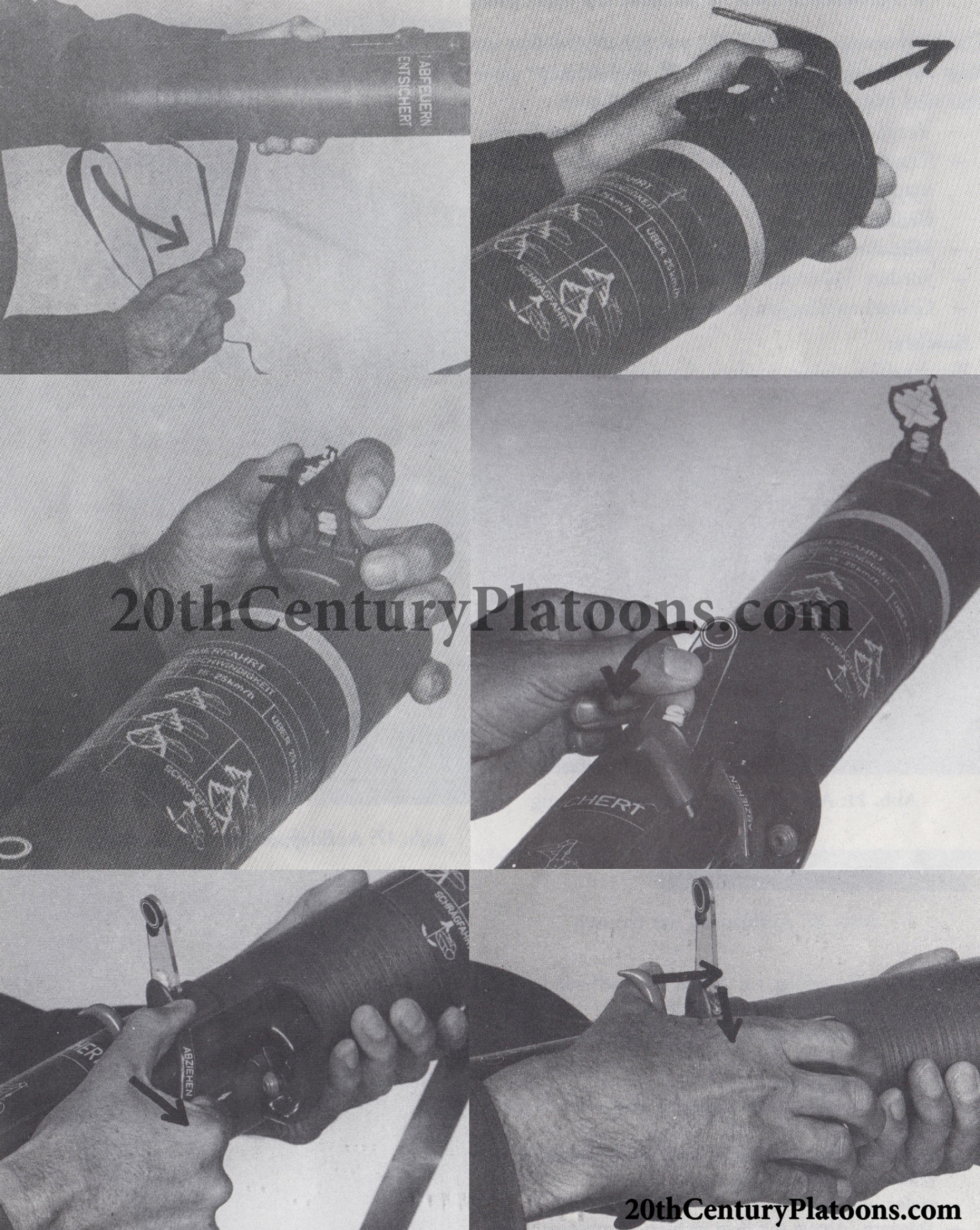
Deploy the shoulder stock, remove the muzzle cover;
Raise the front and rear sights respectively;
Remove the transport safety disk and disengage the safety
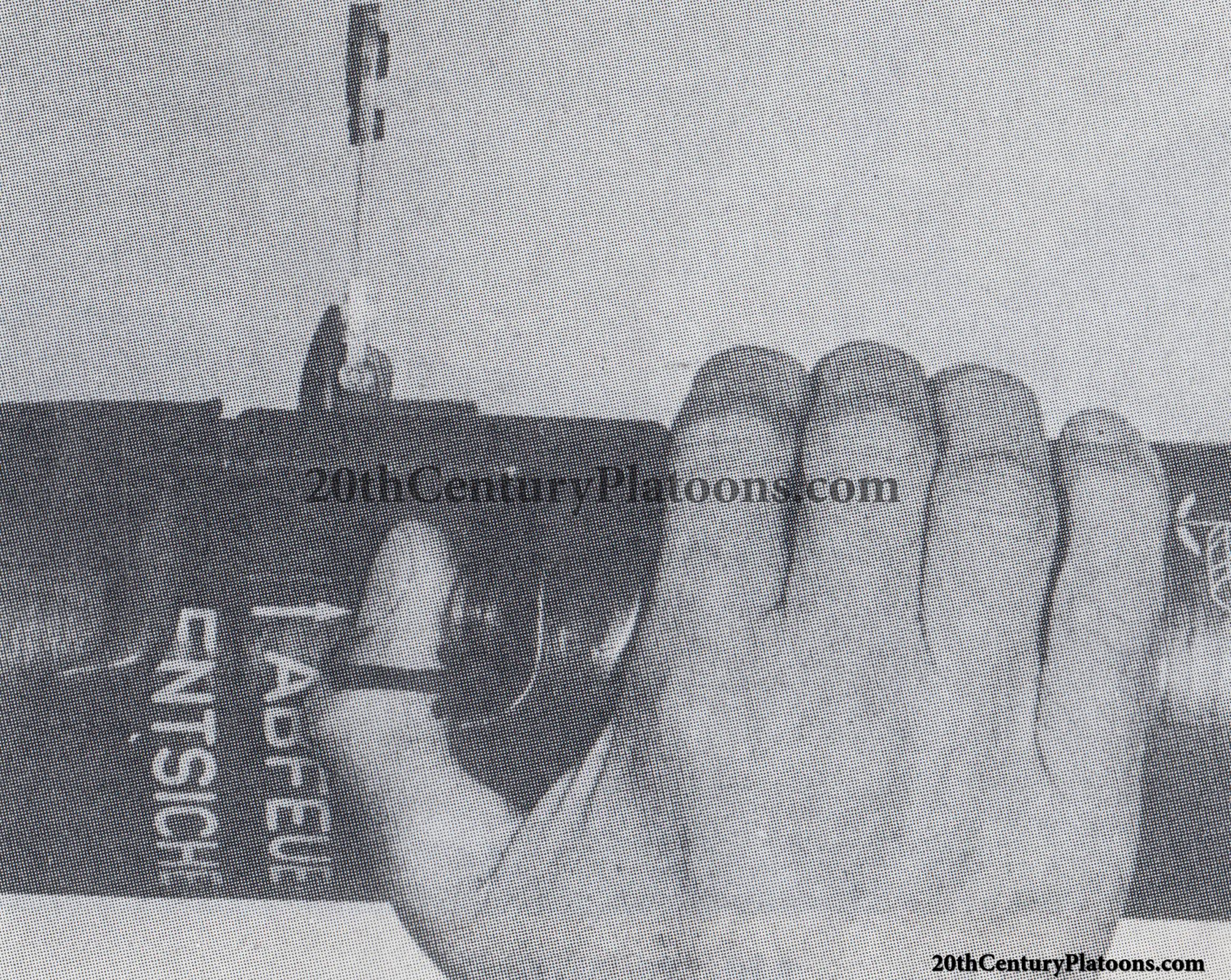
Fire
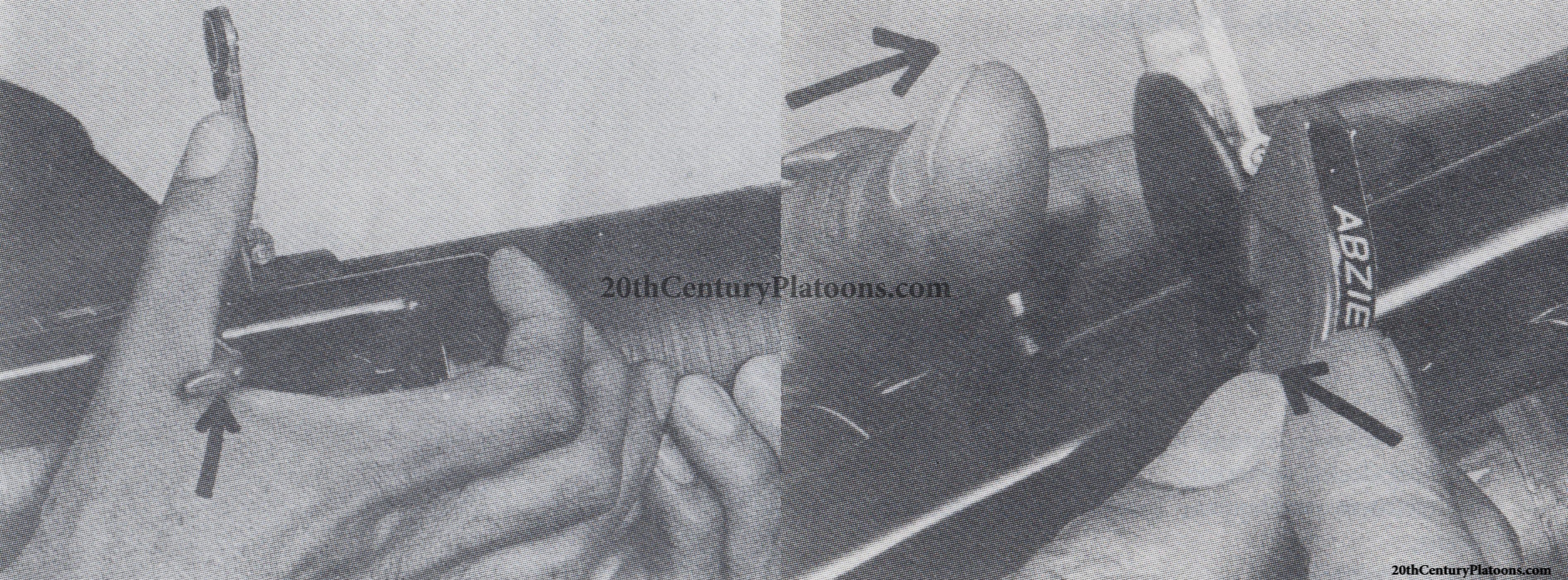
To make the PAR70 safe, the safety is engaged and the transport safety disk is inserted
Although the standard reference on Austrian small arms “Die Bewaffnung des österreichischen Bundesheeres 1918-1988” does not offer a direct explanation for the replacement of the M72 LAW, it does discuss the problems associated with making it safe again ever so briefly:
Translated:Im Unterschied zum PAR.67 kann das PAR.70 wieder gefahrlos gesichert und transportiert werden.
In contrast with the PAR.67, the PAR.70 can be made safe and transported again without danger to the operator.
The above is hardly an end-all be-all explanation: lacking a direct explanation, it does however seem to present a likely reason the M72 LAW was replaced so quickly.
The manual for the PAR 67 is available here, with the PAR 70's manual accessible here.
